Today it is with great pleasure that I welcome novelist Gordon Doherty to the blog. Gordon’s latest instalment in his Legionary series, Legionary: The Blood Road, has just been released and is a cracking read (look out for my review later this week). Gordon joins us to talk about the background behind this magnificent Legionary series, set in ancient Rome.
So, without further ado, it is over to Gordon….
A Gap in History

Writing historical fiction is, for me, like climbing into a time machine and going there, being in the moment. In penning the Legionary series, I feel like I have marched with the legions of the Roman Empire, across the green hills of Thracia, through the sweltering Persian desert, and over the snowy Balkan Mountains. I have fought in countless battles, sliced across the turquoise waters of the Aegean in an imperial galley, climbed the Great Aqueduct in Constantinople with cutthroats in close pursuit. It’s the ultimate escapism. This time machine of mine needs just a little fuel – a solid account of the history to spark the imagination, factual bones to which I can add the fictional flesh. But what if there is no fuel? When a gap appears in the history? Well here’s my experience…

The 4th century AD Roman historian Ammianus Marcellinus serves as, as Edward Gibbon said, “an accurate and faithful guide” thanks to his famous work Res Gestae (literally ‘things done’), in which he charts the events of the empire from the accession of Emperor Nerva in 96 AD all the way through to 378 AD. It was the tail end of this chronicle – the Gothic War – that really intrigued me, and Res Getae served as a perfect historical spine for the Legionary series and a constant supply of fuel for the time machine.

The late 4th Century AD was a tumultuous time for the Roman Empire. The ground shook and a distant thunder sounded as a new threat poured across the eastern horizon. The Huns swept towards Europe from the Eurasian steppe in an event we call the Great Migration. These skilled and fearsome horsemen trampled over every tribe they found – none of whom had an answer to the Hunnic mode of fighting – roving in packs, whirling lassos and loosing clouds of arrows on their stunned quarry. Tribe after tribe fell – butchered or subjugated. Next in the Huns’ line of sight were the Goths, a Germanic people who inhabited the land north of the River Danube (roughly modern Romania).

The Goths were hardy and fierce warriors, but even with the many warriors they could muster, they too simply could not resist the Huns. So they turned and fled south, and in 376 AD they begged to be allowed to cross the Danube and take sanctuary in the Eastern Roman Empire (the empire had existed in two halves for some time by this point). Eastern Emperor Valens permitted their entry, hoping the alliance could be mutually beneficial – the Goths gaining a safer new home and the empire acquiring many thousands of new recruits for the legions. The Romans settled the Goths in a temporary camp somewhere in northern Thracia (modern Bulgaria)… then proceeded to make an absolute mess of matters. The odious Count Lupicinus oversaw severe maltreatment of the refugee population. His soldiers offered the starving Goths only rotting dog meat in exchange for their children to sell as slaves. Inevitably, the refugees broke out in revolt, and the Gothic War began. All Thracia became a war zone, and even the mighty city of Constantinople – the Eastern capital – came under threat.

Ammianus Marcellinus described the bitter struggle wonderfully (see my timeline here), right up to and including the day that would go down in history as one of the empire’s darkest: when the forces of Emperor Valens lined up to face the Gothic horde a short way north of the city of Adrianople on a sweltering August afternoon with the best regiments the empire had – the crack cavalry and palace legions. That day, in the baking heat, they were routed by the Goths. Two-thirds of the eastern legions were slaughtered. Valens was killed amongst his men, and the Eastern Empire was left staring into oblivion as the Goths roared in triumph, masters of Thracia.
“What happened next?” I hear you cry. Well, Ammianus signs off with the infuriatingly calm and valedictory line:

Thus have I, a Greek by birth, and formerly a soldier, related all the events from the accession of Nerva to the death of Valens, to the best of my abilities; professing above all things to tell the truth, which, as I believe, I have never knowingly perverted, either by silence or by falsehood. Let better men in the flower of their age, and of eminent accomplishments, relate the subsequent events.
His parting call for a successor to take up the mantle was never adequately answered. The years after 378 AD are something of a historical void. Not surprising, given that the people of the Roman Empire had at that time more pressing matters to attend to than recording events.
Like the empire itself, I too found myself staring into oblivion. Legionary: Gods & Emperors ended after the Battle of Adrianople, but the story of Pavo and the XI Claudia legion was far from over. Yet how could I write about the aftermath of the Battle of Adrianople when my faithful guide had no more to say?
Another guide, perhaps? Well, there was Zosimus, the 6th century AD writer who composed the Historia Nova (the ‘New History’), a work charting affairs after 378 AD and all the way up to 410. Perfect! Well, not quite. Zosimus relied heavily on secondary research, basing his history directly on the earlier histories of Dexippus, Eunapius and Olympiodorus. This, presumably, is why the Historia Nova is riddled with contradictions and inaccuracies. In some places where he has leveraged Eunapius, he speaks negatively about the Roman-Vandal general Stilicho, and later when he has clearly used Olympiodorus, he speaks glowingly of the same man. Likewise, he describes the post-Adrianople movements of the Goths in a way that demonstrate that he clearly didn’t understand the lay of the land at the time – more than once telling how, after raiding imperial territory, they went back across the Danube (the Goths were firmly planted in fallen Thracia by this point – they never again returned to their old, Hun-ridden home north of the river). Still, Zosimus’ account was by no means a dead loss. Even his muddled version of events served as a starting point, and I attempted to detangle the descriptions and put a plausible timeline to it all.

To add a little more structure to this still-nebulous picture, I charted the attestations of the whereabouts of the Eastern and Western Emperors. Accounts of Theodosius I (Valens’ eastern successor) indicate that he made the city of Thessalonica his base of operations as he set about rejuvenating the Eastern Army. From there he roved north to tackle the Gothic horde… only to suffer defeat somewhere near Scupi in modern Macedonia. After that, it seems he remained in Constantinople for many years. Likewise, it seems Gratian, Emperor of the West, travelled to the war-torn eastern lands at least once per year during the period 378-382 AD. This ties in with the efforts of his Western Army to strike back the Gothic horde, so I could confidently assume that he was directly involved in this initiative.
Then I came to the bombastic orations of Themistius, the rhetorician and philosopher who served as a spokesperson and something of a spin doctor for Emperor Valens’ successor, Theodosius I. Now even the most prosaic of histories are subjective to a degree, but Themistius’ speeches are anything but prosaic and certainly not objective, in they are almost burlesque in their predispositions. Crucially, however, the orations he delivered in the years between 378 AD and 382 AD serve as key indicators of how the Gothic War developed after the disaster at Adrianople, and make it clear that there was a drastic shift in imperial stance. In 379 AD, not long after Theodosius’ coronation, Themistius booms:
The Goths will quake. Our mighty soldier-emperor will draw every able man together, our miners will bring iron for them and we will slaughter the barbarian!
Fighting talk! So although the Eastern Empire was grievously wounded, it is clear they did not intend to lie down and die. Yet just a few years later, Themistius proclaimed, with respect to the Gothic War:
It is an emperor’s job to govern, not to fight. And he has such a love of mankind…
This was clearly a case of managing expectations and an indicator that the aggressive earlier announcement had not played out as predicted. Sure enough, peace was agreed with the Goths the very next year, in 382 AD. The Gothic War ended not with bloody victory and vengeance, but after a series of brutal and inconclusive battles, leaving two exhausted sides realising neither could win.
So it was from this jigsaw of patchy chronicles, minor mentions of the emperors’ movements and blustery monologues from the era’s most famous orator, that I managed to piece together a picture of the post-Adrianople Roman Empire. There are places where I had to speculate and employ the imagination at full thrust – and I can’t describe how much fun that was. Most importantly, the ‘time machine’ was up and running again, and Legionary: The Blood Road was born!
You can find out about the rest of the series here (linked pics below)
Read my review of Legionary: The Blood Road . To buy Legionary: The Blood Road just click on the link.
From the author:
I’m a Scottish writer, addicted to reading and writing historical fiction.

My love of history was first kindled by the ruins of Hadrian’s Wall and the Antonine Wall, and travelling around the ancient world has kept the fire burning brightly ever since. The later Roman Empire and Byzantium hold a particular fascination for me. There is something quite special about the metamorphosis from late antiquity into the ‘dark ages’ and the medieval period.
While historical fiction is my passion, I enjoy writing comedy and sci-fi too. Perhaps one day I’ll find a way to combine all three!
Gordon’s website: www.gordondoherty.co.uk
Gordon on Twitter: @GordonDoherty
Gordon on Facebook: http://www.facebook.com/GordonDohertyAuthor
*
My books
Heroines of the Medieval World tells the stories of women, famous, infamous and unknown, who shaped the course of medieval history. It is available in hardback in the UK from both Amberley Publishing and Amazon UK. It is now available in Hardback from Amazon US and worldwide from Book Depository.
From Emma of Normandy, wife of both King Cnut and Aethelred II to Saint Margaret, a descendant of Alfred the Great himself, Silk and the Sword: the Women of the Norman Conquest traces the fortunes of the women who had a significant role to play in the momentous events of 1066. Silk and the Sword: the Women of the Norman Conquest will be released in the UK on 15 November 2018 and is available for pre-order on Amazon UK, Amberley Publishing and Book Depository.
You can be the first to read new articles by clicking the ‘Follow’ button, liking our Facebook page or joining me on Twitter.
*
©2018 Sharon Bennett Connolly

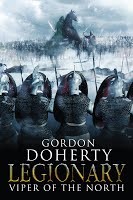
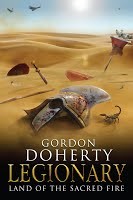
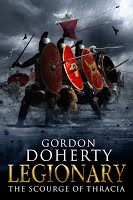
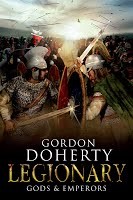


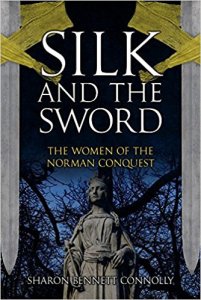
Like all periods of change, the last decades of the fourth and the first few of the fifth century are so interesting exactly because of that transition. I’ve just been researching exactly this period for a couple of stories and experienced the same frustration with sources!
Conn Iggledun said the best we can do is fill in gaps intelligently. I look forward to reading your take, Gordon.
LikeLiked by 2 people
Good advice, Alison. The best we can do is offer something plausible and faithful to the time-period. With a good dash of entertainment too, of course!
LikeLiked by 2 people
Fascinating stories, great research, you made me want to read them all! I’m writing a period a bit later, starting in 1031 AD. Sadly, the knowledge of concrete died with the Roman Empire. I could sure use some in my novels!
LikeLiked by 2 people
1031? Whereabouts? Byzantium, I hope? I explored the Manzikert-era Byzzie empire in my Strategos books… what a journey! 🙂
LikeLike
Fascinating – it’s about all I can manage to research a bit of the history behind some of Britain’s heritage sites! Coping with a full-blown historical novel – wow!
LikeLiked by 1 person